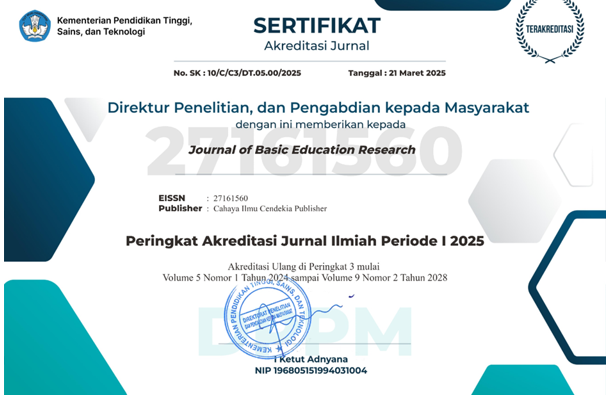A Study of Japanese University Students' Perceptions of Their Appearance and Their Tendency to Wear Masks During School During the COVID-19
Abstract
Purpose of the study: This study aims to shed light on the effects of COVID-19 on university students. Specifically, the author clarifies the habit of wearing masks, a characteristic among Japanese, and their self-perceptions regarding their appearance post-COVID.
Methodology: The author hypothesizes that students who have not had the opportunity to see the real faces of their classmates since entering university will have great resistance to removing their masks in public. The hypothesis will be tested and analyzed by conducting a questionnaire survey of 357 students in Japan to investigate their perceptions of their faces during FY2023.
Main Findings: As of May 2023, 357 students (191 males and 166 females) in Japanese universities underwent Cross tabulation and Chi-Square analysis to examine shifts in their attitudes toward appearance and mask-wearing habits. The study revealed significant differences in attitudes and mask-wearing tendencies between the two genders (p < .001, p = 7.6E-07, = 24.5).
Novelty/Originality of this study: It has been discovered through this study that a greater number of female students continue to wear masks even when it is no longer mandated. This difference in behavior between genders is statistically significant, confirming the hypothesis. The survey also uncovered the reasons behind this behavior, including habituation, changes in self-perception, and the influence of the surrounding.
References
P. Pitriyani and R. Fitriani, “The Role of the Teacher in Developing the Literacy Movement Through Library Visit Activities in Elementary School,” Journal of Basic Education Research, vol. 4, no. 1, pp. 01-09, 2023, doi.org/10.37251/jber.v4i1.306.
F. T. Aldila and S. Rini, “Teacher's Strategy in Developing Practical Values of the 5th Pancasila Precepts in Thematic Learning in Elementary School,” Journal of Basic Education Research, vol. 4, no. 1, pp. 23-28, 2023, doi.org/10.37251/jber.v4i1.301.
D. J. Carragher and P. J. Hancock, “Surgical face masks impair human face matching performance for familiar and unfamiliar faces. Cognitive Research,” Principles and Implications, vol. 5, no. 59. 2020, doi.org/10.1186/s41235-020-00258-x.
Y. Miyazaki et al., “The influence of social anxiety, trait anxiety, and perceived vulnerability to disease on the frequency of face mask wearing,” The Japanese Journal of Psychology, vol. 92, no. 5, pp. 339-349, 2021, doi.org/10.4992/jjpsy.92.20063.
Y. Miyazaki and J. Kawahara, “The sanitary-mask effect on perceived facial attractiveness,” Japanese Psychological Research, vol.58, no. 3, pp. 261‒272, 2016, doi.org/10.1111/jpr.12116.
Cabinet Secretariat, Mar. 2023, “Mask Use Guidance Starting From 13 March 2023,” Office for COVID-19 and Other Emerging Infectious Disease Control, Cabinet Secretariat, Government of Japan. [online]. Available: https://corona.go.jp/proposal/
Y. Akaiwa et al., “Changes in dietary behaviors and food-related accessibility issues and information needs during the COVID-19 pandemic: comparison based on household economic status,” Japanese Journal of Public Health, vol. 69, no. 1, pp.3-16, 2022, doi:10.11236/jph.21-057.
I. Okajima et al., “Sleep changes during COVID-19: a study with sleep recording app users,” Japanese Journal of Behavioral and Cognitive Therapies, vol. 47. no. 2, pp. 83-92, 2021, doi:10.24468/jjbct.20-025.
W. Sun, “Changes of purchasing behavior of supermarket in the background of Covid-19: empirical analysis of local supermarkets in China,” Senshu Business Review, vol. 16, no. 1, pp. 55-63, 2021, doi:10.34360/00011766.
R. P. Rajkumar, “COVID-19 and mental health: A review of the existing literature,” Asian Journal of Psychiatry, vol. 52, no. 102066, pp.1-5, 2020, doi:10.1016/j.ajp.2020.102066.
J. Torales et al., “The outbreak of COVID-19 coronavirus and its impact on global mental health,” International Journal of Social Psychiatry, vol. 66, no. 4, pp.317-320, 2020, doi:10.1177/0020764020915212.
Y, Hashimoto, “People's anxiety, stress and depression in corona related crisis,” The Journal of the Institute of Electronics, Information and Communication Engineers, vol. 38, no. 1, pp. 25-29, 2020, doi.org/10.11430/jsicr.38.1_25.
S. Mizokami, “Student learning and development from a college life perspective: well-balanced curricular and extra-curricular activities show high development,” Kyoto University Research Information Repository, vol. 15, pp. 107-118, 2009.
J. Y. Baudouin and G. Tiberghien, “Symmetry, averageness, and feature size in the facial attractiveness of women,” Acta Psychologica, vol/ 117. no. 3, pp. 313-332, 2004, doi:10.1016/j.actpsy.2004.07.002.
I, R. Olson and C. Marshuetz, “Facial attractiveness Is appraised in a glance,” Emotion, vol.5, no. 4, pp. 498–502, 2005, doi:10.1037/1528-3542.5.4.498.
K. Nakayachi et al., “Why do Japanese people use masks against COVID-19, even though masks are unlikely to offer protection from infection?,” Frontiers in Psychology, vol.11, no.1918, pp. 1-5, 2020, doi.org/10.3389/fpsyg.2020.01918.
R. Sakakibara and H. Ozono, “Why do people wear a mask? A replication of previous studies and examination of two research questions in a Japanese sample,” Frontiers in Psychology, vol. 92, no. 5, pp.332-338, 2020, doi:10.4992/jjpsy.92.20323.
N. Komiya, “A study of Japanese university students influenced by the Covid-19 pandemic and their awareness with their one’s own face,” International Journal of Cognitive Research in Science, Engineering and Education, vol. 10, no. 2, pp. 17-26, 2022, doi.org/10.23947/2334-8496-2022-10-2-17-26.
W. H. Marya and K. S. Judith, “Presentations for Decision Makers Third Edition,” Wiley, New York, NY, USA, 1996.
H. Wada et al., “Proposal of a Design Support Method of Backcasting Scenarios for Sustainable Society,” Transactions of the Japan Society of Mechanical Engineers Series C, vol. 79, no. 799, pp. 845–857, 2013, doi.org/10.1299/kikaic.79.845.
L. J. Cronbach, “Coefficient alpha and test internal structure of tests,” Psychometrika, vol. 16, pp. 297- 334, 1951.
M. Takamoto and T. Hattori, “Review of psychological scale development focusing on reliability coefficient in Japan,” Japanese Psychological Review, vol. 58, no. 2, pp. 220-235, 2015, doi.org/10.24602/sjpr.58.2_220.
Chiba Prefectural Government, Jan. 2023, “Examples of New Lifestyles in Practice,” Health and Welfare Department Disease Control Division. [online]. Available: https://www.pref.chiba.lg.jp/kenfuku/kansenshou/ncov/newlifestyle.html
M. R. Shauna et al., “Zooming into cosmetic procedures during the COVID-19 pandemic: the provider's perspective,” International Journal of Women's Dermatology, vol. 7, no. 2, pp. 213-216, 2021, doi.org/10.1016/j.ijwd.2021.01.012.
C. Silence et al., “Life after lockdown: zooming out on perceptions in the post-videoconferencing era,” International Journal of Women's Dermatology, vol.7, no. 20, pp. 774-779, 2021, doi:10.1016/j.ijwd.2021.08.009.
T. Suzuki, and M. Yazawa, “The psychological influence of cosmetic behavior changes due to wearing masks during the COVID-19 pandemic,” Appearance and Adornment Psychological Studies, vol. 1, no.1, pp. 5-12, 2022, doi.org/10.57331/aaps.1.1_5.
J. Cohen, “Statistical Power Analysis for the Behavioral Sciences,” Routledge, New York, NY, USA, 1988, pp. 224-227.
A, Mizumoto and O, Takeuchi. “Basics and Considerations for Reporting Effect Sizes in Research Papers,” Kansai English Language Society (SELT), vol. 31, pp. 57-66, 2008, hdl.handle.net/10112/5019.
S. Kawano et al., “Modern people's awareness of men's makeup and its social background,” Research Bulletin of Osaka Shoin Women's University, vol. 11, pp. 23-34, 2021.
G. Castro, “The 'beauty' of male circumcision in Japan: gender, sexuality and the male body in a medical practice,” Sociology, vol. 47, no. 4, pp. 687-704, 2012, doi.org/10.1177/0038038512453794.
R. Saladin, “Between gyaru-o and sōshokukei danshi: body discourses in lifestyle magazines for young Japanese men,” Contemporary Japan, vol. 27, no. 1, pp. 53-70, 2015, doi.org/10.1515/cj-2015-0004.
M. Kamatani, “The impact of the COVID-19 epidemic on explicitand implicit attitudes towards black sanitary mask wearer COVID-19,” The Japanese Journal of Psychology, vol. 92, no. 5, pp. 350-359, 2021, doi.org/10.4992/jjpsy.92.20046.
Copyright (c) 2023 Komiya Nozomi

This work is licensed under a Creative Commons Attribution-NonCommercial 4.0 International License.
Authors who publish with this journal agree to the following terms:
- Authors retain copyright and acknowledge that the Journal of Basic Education Research is the first publisher licensed under a Creative Commons Attribution 4.0 International License.
- Authors are able to enter into separate, additional contractual arrangements for the non-exclusive distribution of the journal's published version of the work (e.g., post it to an institutional repository or publish it in a book), with an acknowledgment of its initial publication in this journal.
- Authors are permitted and encouraged to post their work online (e.g., in institutional repositories or on their website) prior to and during the submission process, as it can lead to productive exchanges and earlier and greater citation of published work.





.png)


.png)
.png)


















